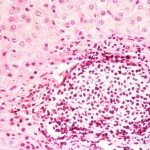Lien vers Pubmed [PMID] – 15830155
Virus Genes 2005 May;30(3):363-70
An avian paramyxovirus type-1 (APMV-1) was classified as virulent according to its Intra Cerebral Pathogenicity Index (ICPI), but as avirulent according to the motif of its F protein cleavage site. Although this atypical APMV-1 was isolated from sick, unvaccinated pigeons, it was not grouped with pigeon variants regarding its antigenic and genetic characterisation. We analysed its quasispecies nature by cloning and sequencing parts of the genome in three different genes to evaluate if heterogeneity might explain the difference observed between the ICPI and the F protein cleavage site motif. Two distinct sub-populations were detected in the phosphoprotein gene. In the fusion protein gene, two clones were found to be related to typical pigeon variants in the hypervariable domain.

